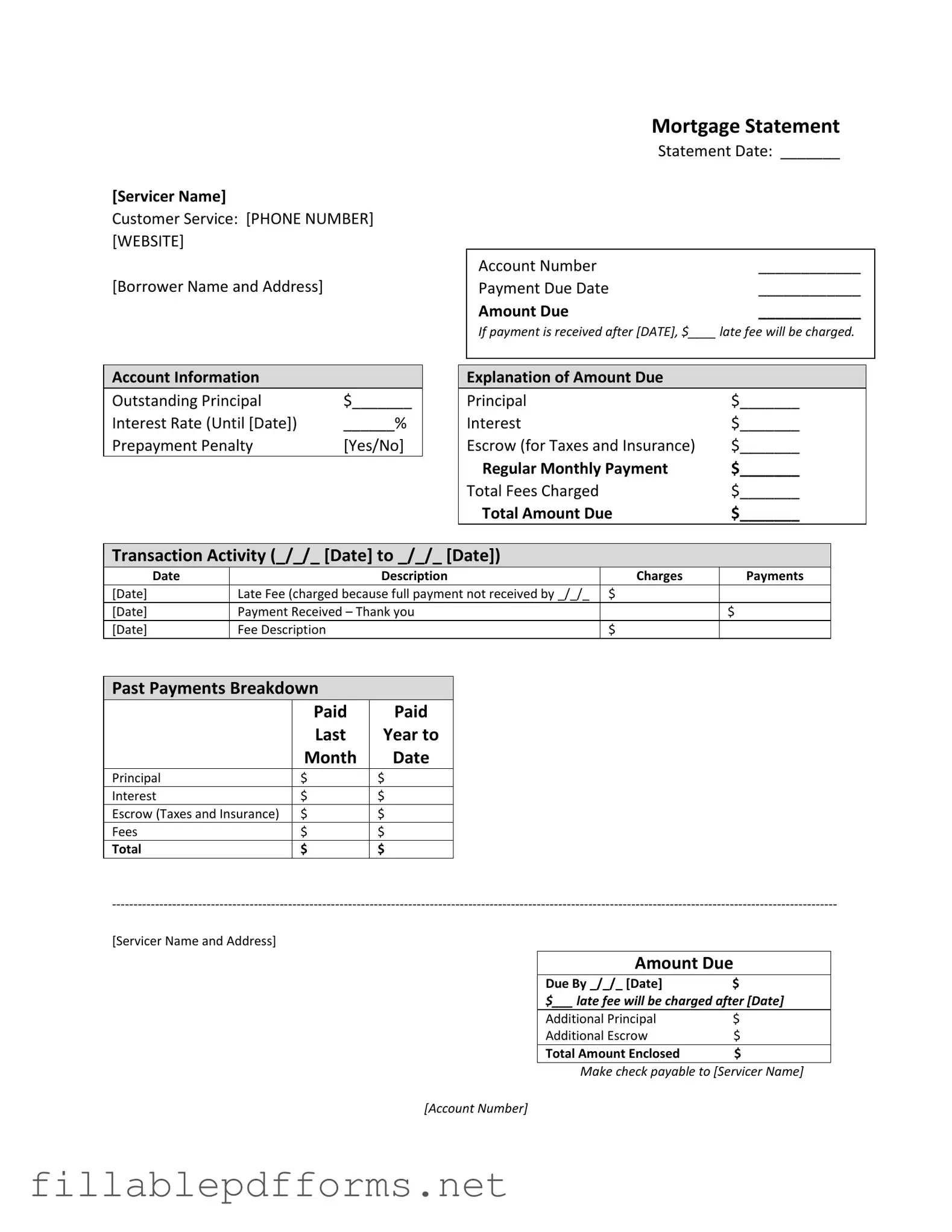Understanding your mortgage statement is crucial for managing your home loan effectively. This important document provides a comprehensive overview of your mortgage account, including key details such as the servicer's contact information, your account number, and the payment due date. It outlines the amount due, including any late fees that may apply if payments are not received on time. The statement also breaks down the outstanding principal and interest rate, giving you clarity on your financial obligations. Additionally, it highlights any prepayment penalties and provides a detailed explanation of the amounts due, including principal, interest, and escrow for taxes and insurance. You will find a transaction activity section that lists recent charges and payments, along with a past payments breakdown to help you track your payment history. Importantly, the statement contains warnings regarding delinquency and the potential consequences of late payments, underscoring the significance of staying current on your mortgage. If you are facing financial difficulties, the statement offers resources for mortgage counseling and assistance, ensuring you are not alone in navigating these challenges.
